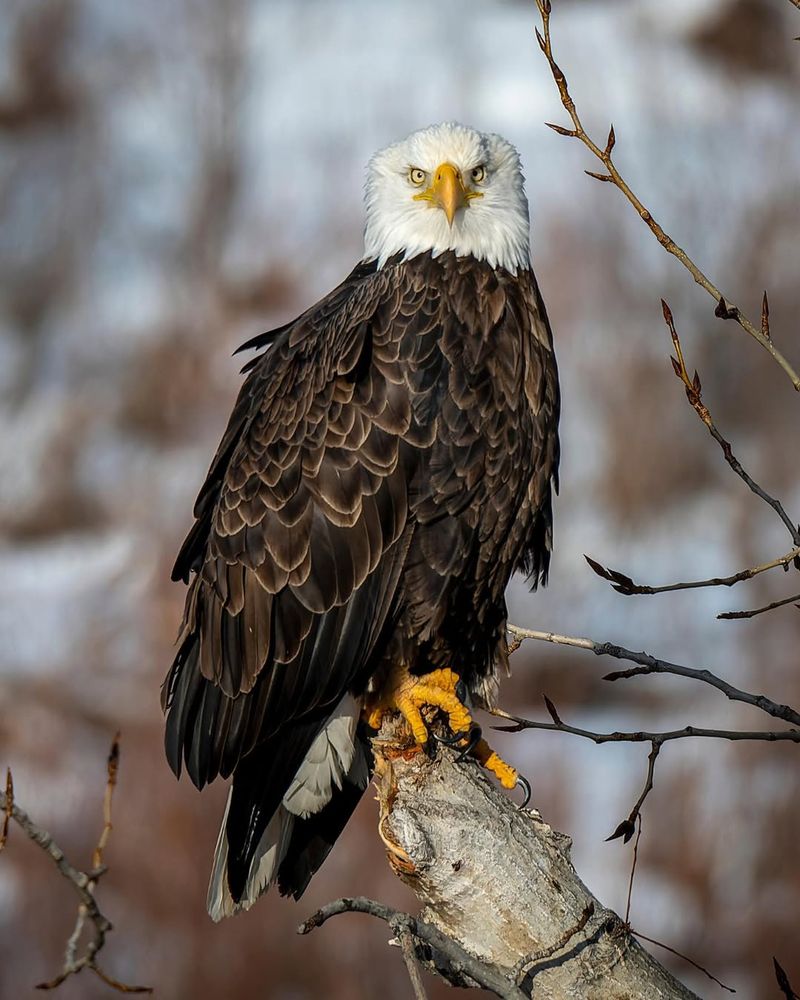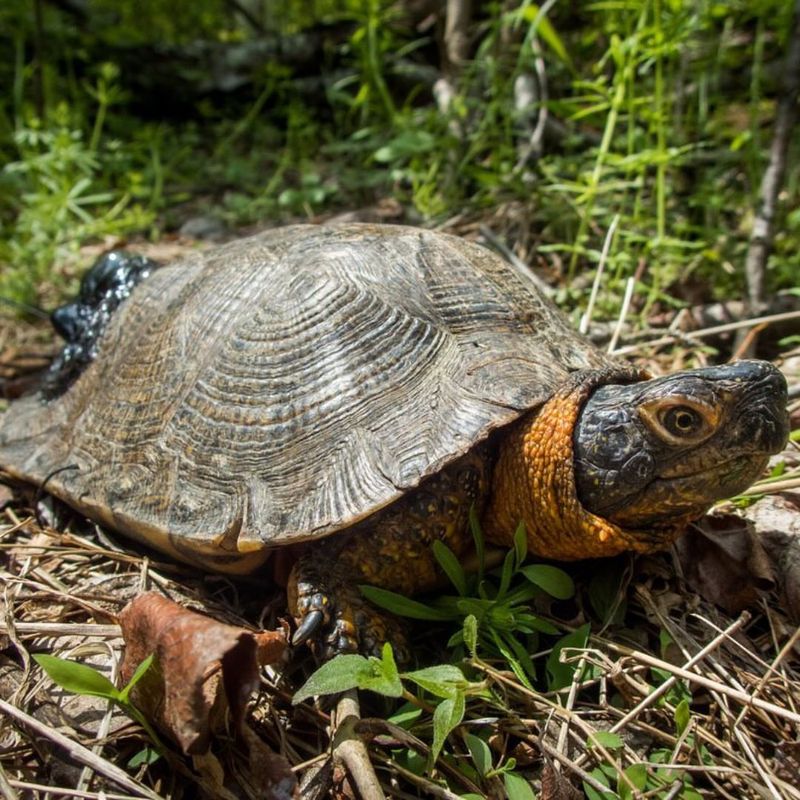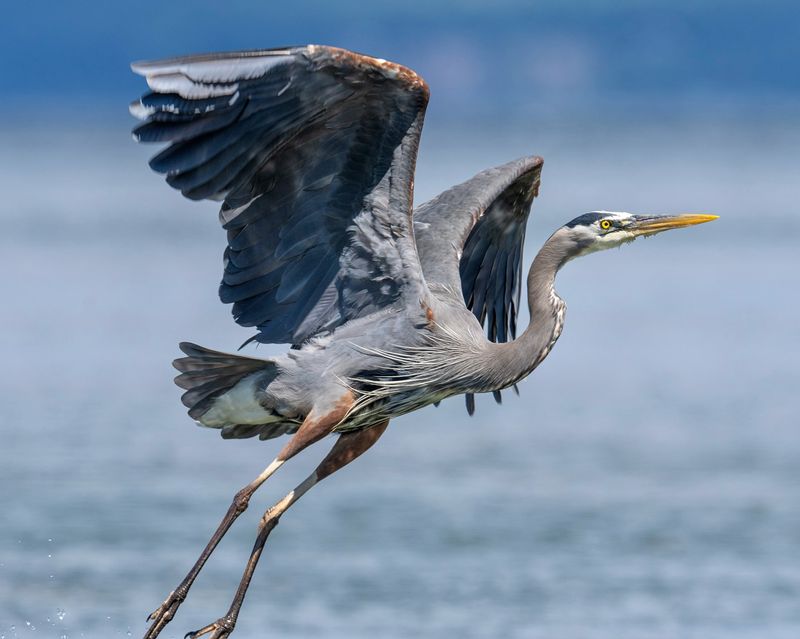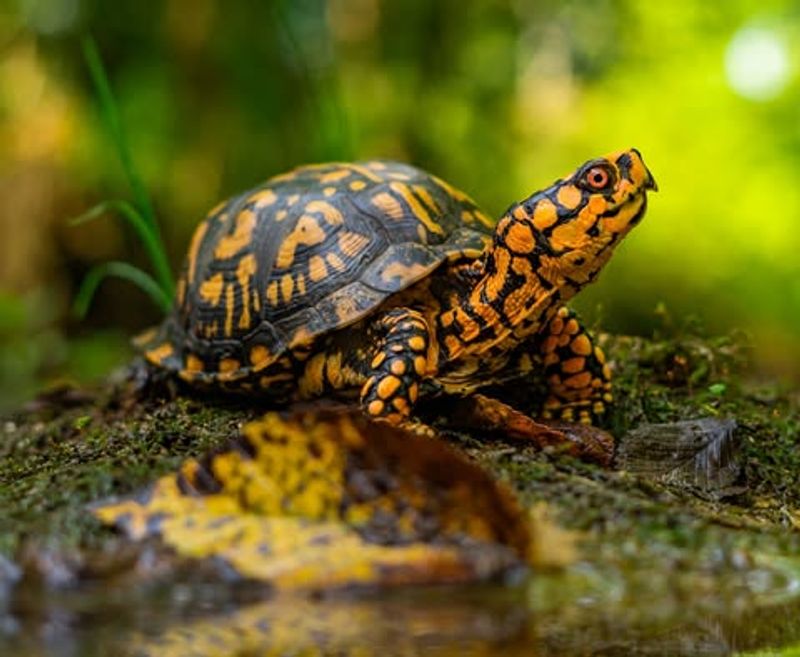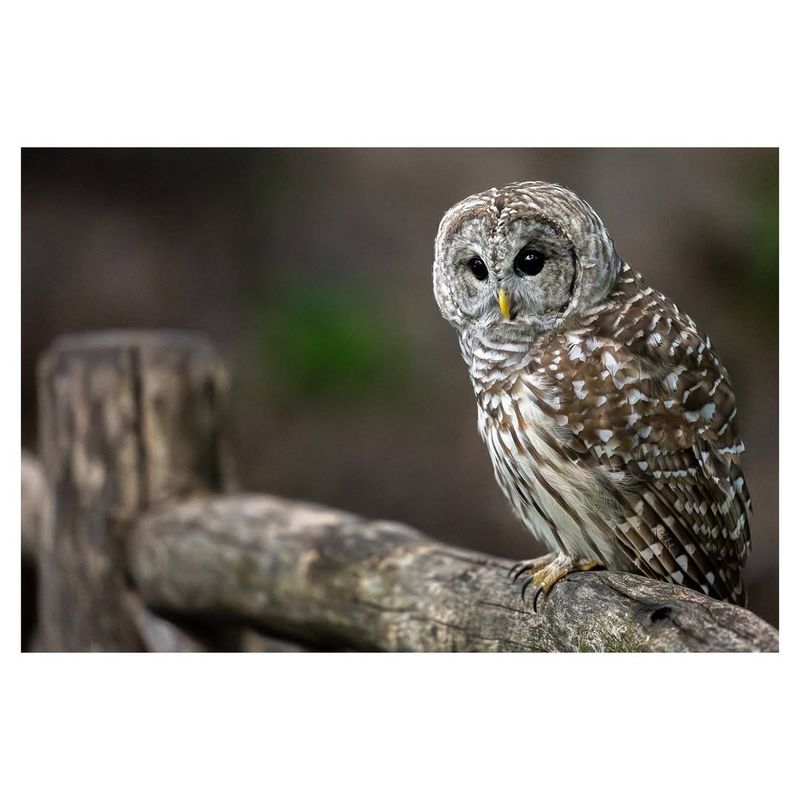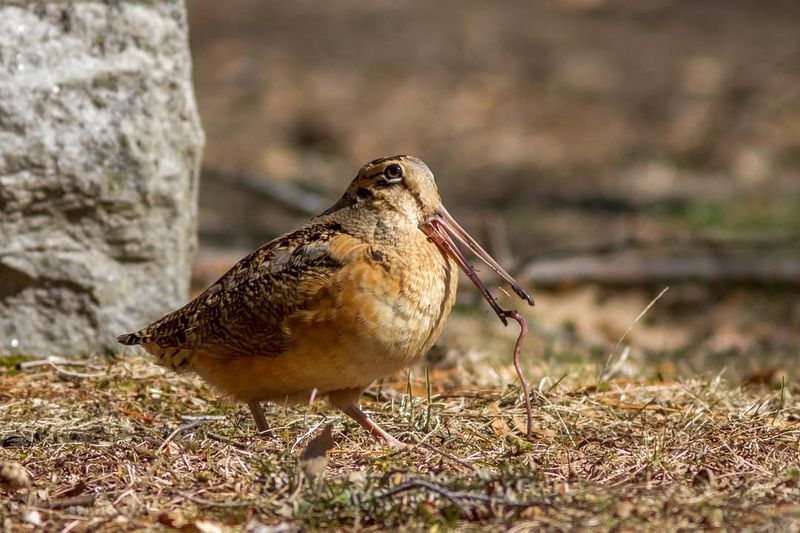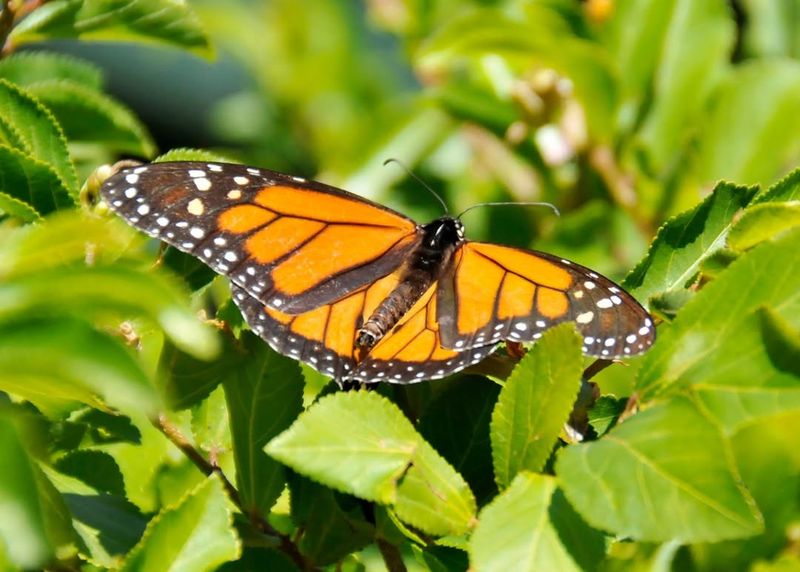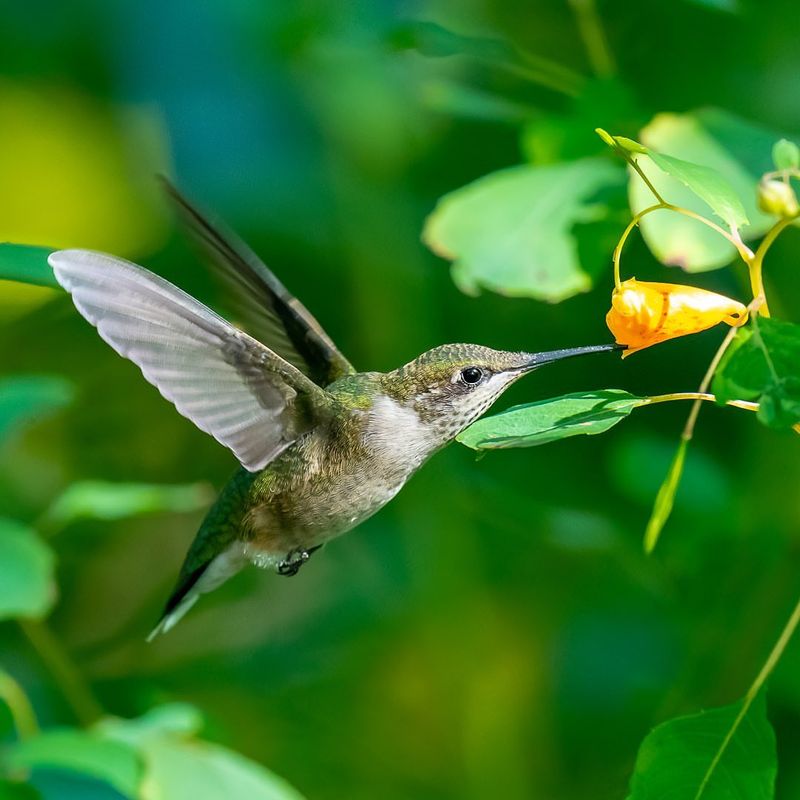Maine has several animals that wander into yards and can’t legally be moved. I’ve had one show up unexpectedly, and it definitely caught me off guard.
These creatures have rules behind them that many people don’t realize. Knowing who they are keeps you from making a risky mistake.
1. Bald Eagles
America’s national symbol enjoys full federal protection under the Bald and Golden Eagle Protection Act, and Maine residents take this seriously. If one decides to nest near your property, you’re legally required to leave it alone.
Disturbing an eagle nest can result in fines up to $100,000 and even jail time. Maine has seen eagle populations rebound beautifully in recent decades, with nesting pairs found along coastal areas and near lakes.
Contact wildlife authorities if an eagle poses genuine safety concerns rather than taking matters into your own hands.
2. Northern Long-Eared Bats
With ears that seem almost comically oversized for their tiny bodies, these bats are federally listed as threatened under the Endangered Species Act. Maine homeowners cannot disturb or remove them from roosting sites without special permits.
White-nose syndrome hit this species particularly hard, wiping out entire colonies across the Northeast. They often roost in dead trees, barns, and occasionally homes during summer months.
Professional wildlife experts can help create bat-friendly alternatives that relocate them humanely while keeping your living space bat-free.
3. Wood Turtles
Known for their intelligence and curiosity, wood turtles wander through Maine forests and sometimes into gardens near wooded areas. State law prohibits possessing, selling, or harming these charismatic reptiles.
They’re listed as a species of special concern due to habitat loss and illegal collection for the pet trade. Wood turtles can live over 50 years and return to the same nesting sites annually.
If you find one crossing your driveway, gently help it continue in the direction it was heading rather than relocating it elsewhere.
4. Great Blue Herons
Standing nearly four feet tall, great blue herons might visit your koi pond for an easy meal, but harming them violates the Migratory Bird Treaty Act. Maine homeowners must find non-lethal deterrents to protect ornamental fish.
Netting over ponds or installing motion-activated sprinklers keeps herons away without breaking federal law. Colony nesting sites called heronries receive additional protection during breeding season.
Watching these prehistoric-looking birds hunt can be mesmerizing, even if they occasionally snack on your goldfish collection.
5. Eastern Box Turtles
Box turtles at the northern edge of their range in southern Maine receive special protection as an endangered species within the state. Their ability to completely close their shell makes them unique among North American turtles.
Collecting them as pets contributed to population declines, making possession illegal without proper documentation. They have incredibly small home ranges and removing one from its territory often results in death.
If you encounter a box turtle in Maine, photograph it and report the sighting to wildlife officials who track this rare population.
6. Barred Owls
Their distinctive “who cooks for you” call echoes through Maine forests and increasingly suburban neighborhoods. Federal protection under the Migratory Bird Treaty Act means you cannot harm or remove barred owls, even if they’re nesting uncomfortably close to your house.
These adaptable predators help control rodent populations around homes and gardens naturally. Barred owls sometimes become aggressive during nesting season, but attacks are rare.
Wearing a hat and carrying an umbrella when walking near active nests usually prevents any confrontational encounters.
7. American Woodcocks
Often called timberdoodles, these chunky shorebirds perform spectacular courtship flights over Maine fields each spring. Protection under the Migratory Bird Treaty Act prohibits harming them outside of regulated hunting seasons.
Woodcocks probe garden soil and lawns for earthworms using their flexible bill tips. Their camouflage is so effective that you might nearly step on one before it flushes.
If woodcocks are displaying on your property, you’re witnessing one of nature’s most entertaining rituals, complete with aerial spirals and twittering sounds made by specialized wing feathers.
8. Monarch Butterflies
While not technically illegal to touch, monarch butterflies receive protection through various state conservation initiatives in Maine. Their migration journey spans thousands of miles, making every individual important for species survival.
Destroying milkweed plants where monarchs lay eggs undermines conservation efforts across the state. Maine gardeners can support monarchs by planting native milkweed species and avoiding pesticide use.
Watching caterpillars transform into chrysalises and then butterflies provides educational opportunities while contributing to population recovery efforts throughout the Northeast region.
9. Ruby-Throated Hummingbirds
The only hummingbird species breeding in Maine, ruby-throats are protected under federal law despite their tiny size. Harming them or disturbing active nests carries the same penalties as violations involving larger birds.
They migrate incredible distances to Central America each fall, with some crossing the Gulf of Mexico nonstop. Keeping hummingbird feeders clean and filled supports them during migration without violating any regulations.
Native tubular flowers like cardinal flower and bee balm provide natural nectar sources that attract these flying jewels to Maine gardens throughout summer months.
10. Peregrine Falcons
Once nearly extinct due to DDT poisoning, peregrine falcons have made a remarkable comeback in Maine but remain protected under state and federal law. They nest on coastal cliffs and increasingly on tall buildings in urban areas.
As the world’s fastest animal, peregrines can dive at speeds exceeding 200 miles per hour while hunting. Disturbing nesting sites can result in significant legal consequences and setbacks for recovery efforts.
If peregrines nest on your property or building, wildlife officials can provide guidance on coexisting peacefully during the breeding season throughout Maine.


